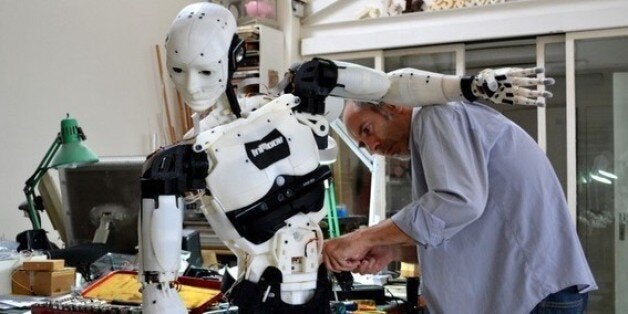

In April 2015, I joined London tech startup, Wevolver. Over the past year, we've gathered a group of artists, hackers and engineers to create life-sized robotic "avatars" for hospitalised children hopeful to experience more from the outside world.
Combining innovations from the 3D printing and virtual reality industry, instructions to replicate the project are openly available for anyone to use.
It all started in 2014 when Wevolver co-founder Richard Hulskes met Kevin Watters at the New York Maker Faire. Kevin is a contributor to MyRobotLab, an open source Java framework for creative machine control.
Using his programming knowledge, Kevin hacked a connection between the 3D printable humanoid robot "InMoov" and the Oculus Rift virtual reality headset. This connection enabled the InMoov to mimic the head movements of the wearer while they see the world through its eyes.
Realising the potential, Richard contacted the Children's Hospital School at Great Ormond Street Hospital to see if they thought a 3D printable "avatar" could be used to enhance the lives of children who were required to stay inside due to severe and sometimes terminal illnesses.
After meeting, a clear project goal was settled upon -- create a 'telepresence' robot to allow the children of Great Ormond Street to safely explore one of London's greatest places of discovery: London Zoo.
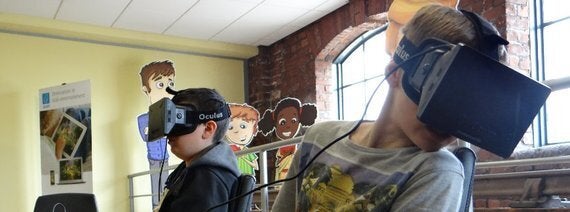
Initially, the robot was going to be operated using video game controllers to complement the virtual reality experience. However, we soon met Miika Perä and Hamid Reza Zaheri, two engineers seeking to disrupt the $50 billion global nuclear decommissioning market, and together we decided to push things a little further.
Miika and Hamid were in the process of developing a new system to replace traditional robotic teleoperation with the latest innovations from the gaming industry. Currently, robotic teleoperation involves the electronic remote control of machines using joystick controls and flat screen TVs, which often takes years of specialist training for the operator to be effective.
Miika and Hamid hoped that by making teleoperation more intuitive by using virtual reality they could pave the way forward to reduce human exposure to hazardous 'high-level waste' materials generated by uranium and plutonium reactors.
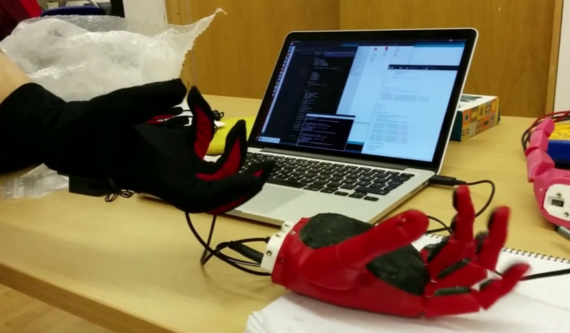
We began improving the teleoperation of the first InMoov "robot for good" at London Hackspace, starting with a simple data glove that enabled direct control of the robot's arms and fingers. However, the limited performance of our prototype made it pretty clear that the original InMoov hands would need to be replaced to achieve the level of dexterity the children would be expecting.
To solve this problem, I contacted Open Bionics co-founder, Sammy Payne, to see if she could help. Sammy's company creates affordable and open source 3D printed bionic hands for amputees but they had also been working on a fully articulated robotic hand called the Ada Hand -- a perfect upgrade for the InMoov.
With help from Sammy and Peter Gibbons from Bristol Robotics Lab, as well as a pair of Manus Gloves (the first consumer virtual reality glove) it wasn't long before the Ada Hand was being used for sophisticated teleoperation.
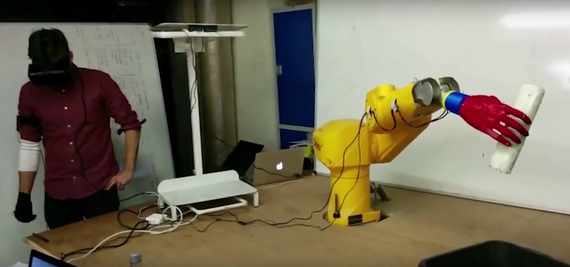
Following this success, Richard was contacted by Jamie Rodota from the Sacramento Kings (SK) -- an American professional basketball team from California. Jamie explained that in 2014 the Sacramento Kings launched a project to enable kids in a local hospital to experience the game "courtside" using virtual reality; now they were ready to take things further with a 3D printed InMoov for their new stadium.
Around this time, Wevolver was nominated for the "3-DIY" Interactive Innovation Award at SXSW, which gave Richard and his co-founder, Bram Geenen, the opportunity to visit the US to meet the team.
Following the trip, students from St. Francis and Jesuit High Schools are now competing to build an InMoov robot for the new Sacramento Kings stadium. When the robot is ready, the same kids who experienced the game "courtside" using virtual reality back in 2014 will now have the opportunity to not just see players but high-five and talk to them using the student built "avatar".
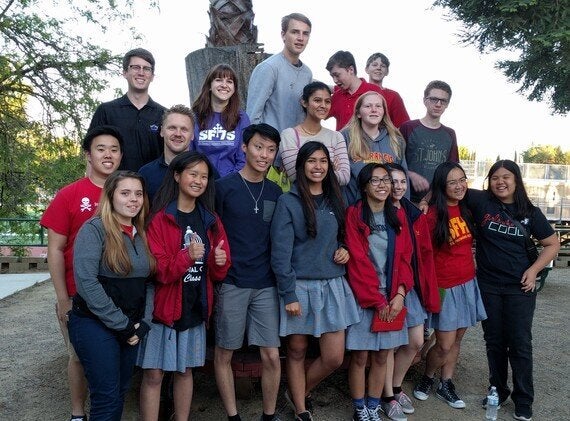
Work on the project continues by a core team of volunteers in the UK who are also providing assistance to the Sacramento Kings project. An updated 'bill of materials' is due to be released through the 'Robots For Good' project page on Wevolver.
The project page includes all the design files and step-by-step assembly instructions anyone needs to start making a 3D printed telepresence robot to help hospitalised children in their local area.
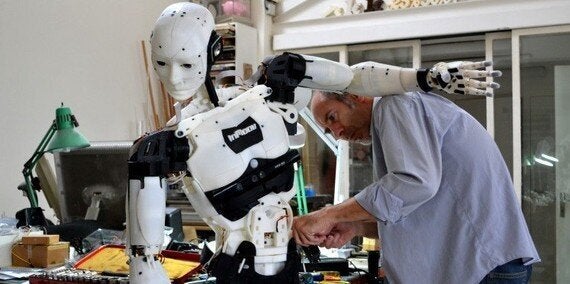
And just as importantly, let's take a moment to recognise the incredible work of InMoov creator, Gael Langevin. Without his contribution, none of this would be possible. He designed an entire 3D printable human-sized robot from scratch and decided to share it with the world.
HuffPost UK Tech is running a two-week focus on our Tech For Good campaign, which aims to highlight the technology that is driving social change and making a positive, long-lasting difference to our world. If you'd like to blog on our platform around this topic, email ukblogteam@huffingtonpost.com with a summary of who you are and what you'd like to blog about.
